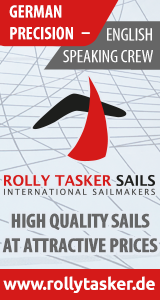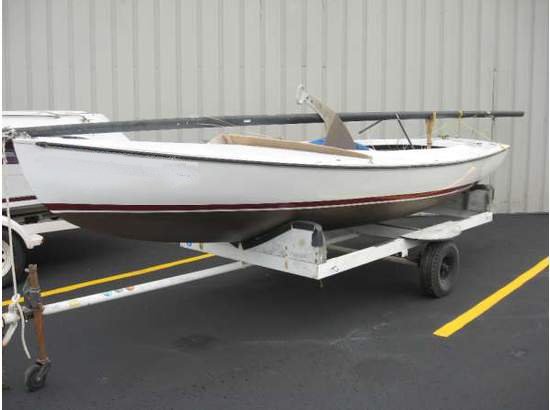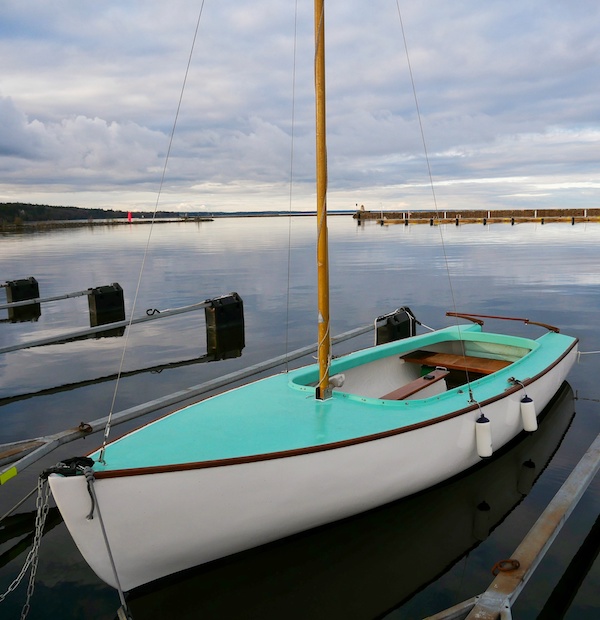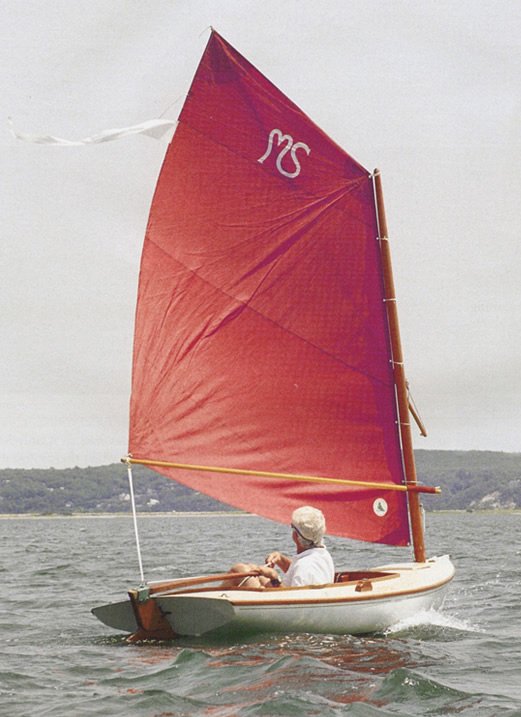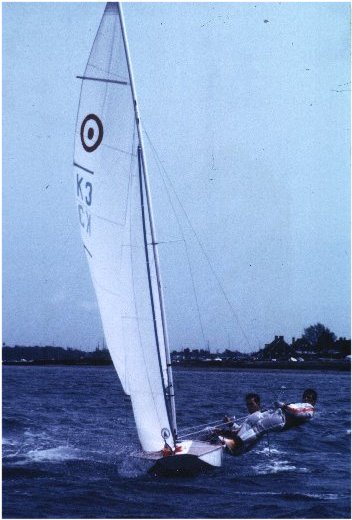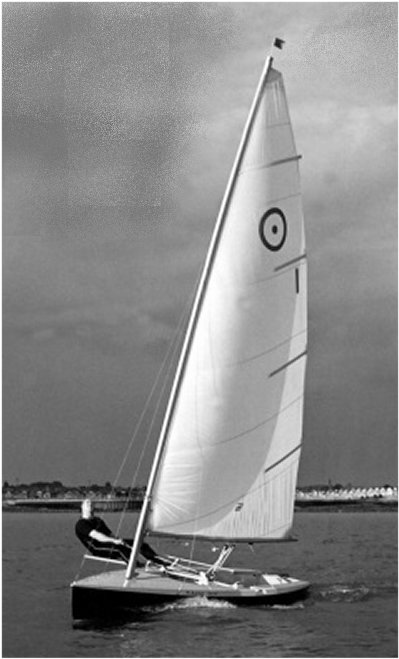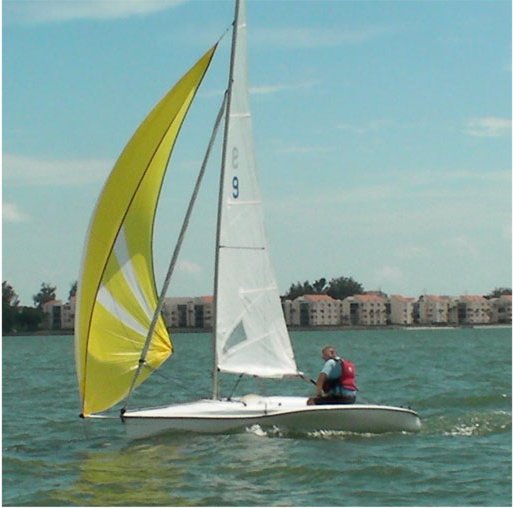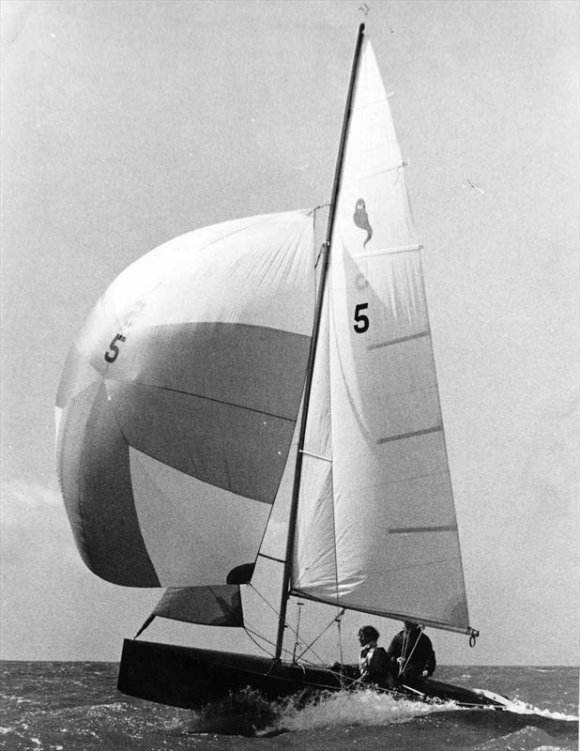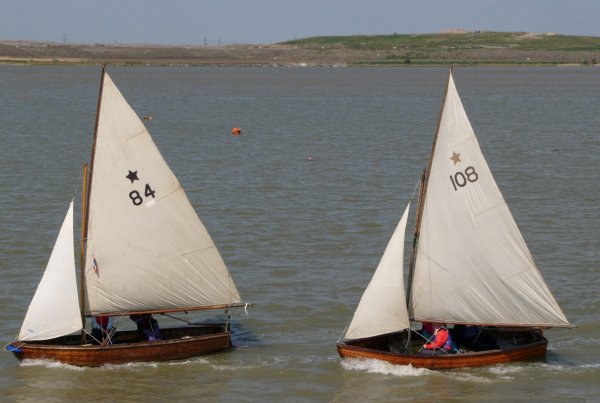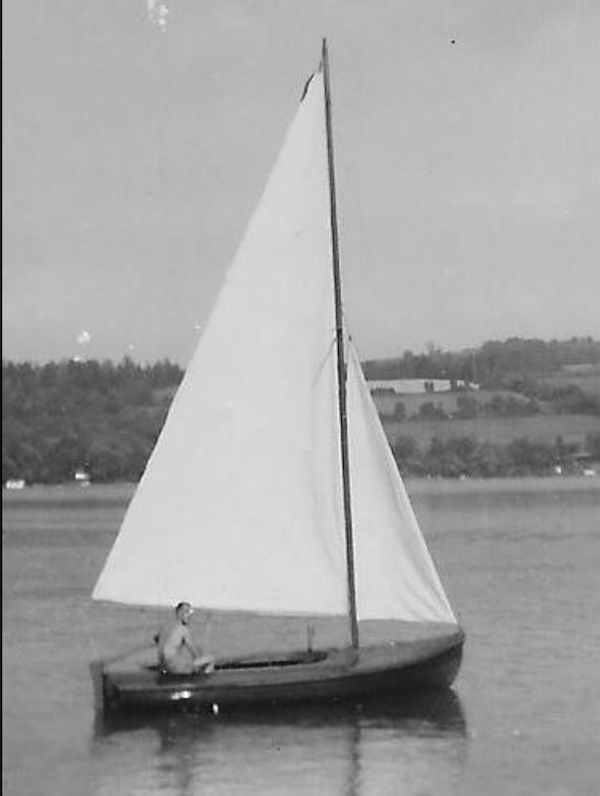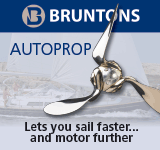The ARROW was once a popular one-design class on Lake Michigan (USA). Though the original builder went out of business after World War II and it’s thought that nor more than 200 were ever built.
It survived a transition to fiberglass construction, but did not thrive afterward.
Raced with main and jib only. As best as can be determined, any kind of class organization had disappeared by 1970.
(Even a photograph has proved to be hard to find.)
Pictured here is a later fiberglass version built by Stamm Boat Co.
Stamm Boat Co. was located in Delefield, Wisconsin, (USA) It’s unlikely that any boats were built commercially after 1967.
Update (November 2018): The Arrow is still being raced on lake Michigan with the last remaining fleet (~10 boats of which around 4 race regularly) based in Wilmette Harbor.
Hull: Centerboard Dinghy
Dinghy with pivoting centerboard
Very early ‘power/sail hybrid’ from Sweden. The brainchild of Gusta Erikson.
One unique feature is the twin rudders with the outboard mount in between.
2 piece mast for ease of stowing.
(More information is being acquired)
This from Sara Erikson, daughter of the designer:
My father, Gusta (Gus) Erikson, designed and built the SkiBreeze, starting the production in 1957 and continuing until around 1965. The hulls were hand-made in our factory at Scandia Boatyard, Uddevalla, Sweden, and probably among the first fiberglass hulls to be built in Sweden. We had one of the first boats in this series and tested it for sailing, motoring and waterskiing – my father’s ambition was to have it multi-functional, but I always felt it was at it’s best under sail. We used to win sailing races all the time with it thanks to it’s ability to plane and because we could raise the centerboard and get through shallow passages where other boats couldn’t go.
According to Jay Mixter a number were orinally imported to the US (100?).
Drawings available at the Swedish Maritime Museum (Jac. Iversen Collection).
Photo courtesy of Karl Vesterdahl.
Crawford Boat Building
P.O. Box 486
Humarock, MA 02047
781-837-3666
roger@melonseed.com
www.melonseed.com
A successor to the FIREBALL but for lighter and smaller sailors, cheaper and less complex to build.
Only built in small numbers though it was awarded the Prince Philip (Duke of Edinburgh’s) Designers Prize in 1975.
Spinnaker SA: 118 sq.ft.
Originally commissioned by a German builder for the European market.
Though it received raves for it’s sailing performance, it’s popularity, from the beginning, was eclipsed by the FINN which had appeared earlier.
The photo here shows the prototype (sailed by the designer).
The sliding seat was done away with on the ‘final’ production version and a 2 pieced unstayed mast was used. (a la LASER).
Redesign of the RAIDER I (16) with sloop rig and a number of other changes.
Designed specifically for the Paris Olympics of 1924. Few, if any, where built afterward, making it a class of historical interest only.
Light weight, 2 man dinghy with one trapeze permitted.
Originally intended as a larger version of the CHERUB, though not a development class.
Achieved very limited popularity in Australia and the UK.
Also called? HAMBLE RIVER STAR.
The HAMBLE STAR is a hard chine, open dinghy of carvel type construction.
Rig is gunter sloop.
It is thought there are at least 30 still sailing.
(Primarily at Anchor Bay, Kent)
Originally called KOHINOOR.
Sailed primarily on the Finger Lakes, NY, (USA).
110-pound steel centerboard.
A short run of fiberglass versions were built by East Suburban Plastics of Syracuse, NY (1975).
The Wright-Built Boat Company was located at Dundee, NY.
Dimensions are approximate.
